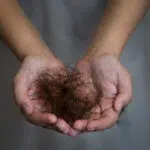Understanding Hair Growth: The 3 Phases Every Strand Goes Through
Last updated on September 11, 2025
Hair plays a significant role in how we present ourselves and how we feel—but what we don’t realise is that a lot is happening behind the scenes! There’s a complex biological system that determines how long it grows, when it sheds, and how healthy it looks. Whether you’re dealing with hair thinning, considering a hair restoration treatment or hair transplantation, or simply want to better care for your hair and scalp, understanding the 3 stages of hair growth is key.
Every single strand of hair goes through a natural life cycle made up of three distinct phases: anagen (growth), catagen (transition), and telogen (resting/shedding). Each phase affects the hair’s length, strength, and lifespan. In this article, we’ll break down what happens in each stage, why it matters, and what you can do to support a healthier growth cycle.
1. Anagen Phase – The Growth Stage
The anagen phase of hair growth is the most important part of the cycle—this is when your hair is actively growing. On average, 85–90% of the hairs on your head are in the anagen phase at any given time.
What happens during anagen?
During this phase, your hair follicles are deeply rooted in the scalp and are actively producing new cells. These cells are pushed upward, forming the hair shaft. As long as your follicles stay healthy and undisturbed, hair can continue growing for 2 to 7 years, depending on your genetics, age, and health.
People with longer anagen phases can grow their hair very long, while those with shorter phases may find their hair grows only to a certain length before shedding.
How to support the anagen phase:
- Eat a nutrient-rich diet (especially protein, iron, biotin, B vitamins, and silica).
- Avoid trauma to the scalp (tight hairstyles, aggressive brushing, excessive heat).
- Stimulate the scalp with massage or microneedling to increase circulation.
- Consider medical options like Growth Factor Treatment or exosome treatments to keep follicles active longer.
2. Catagen Phase – The Transition Stage
The catagen phase of hair growth is much shorter—usually lasting about 10–14 days. Only around 5% of your hairs are in this phase at a time.
What happens during catagen?
In this stage, the hair stops growing as it prepares to shed. The follicle shrinks, disconnects from the blood supply, and the base of the hair forms what’s known as a club hair. This is essentially the hair’s anchor before it loosens and eventually falls out in the next stage.
While you can’t feel this happening, it’s a critical part of the regeneration process. It allows the follicle to reset and prepare for new growth.
Why catagen matters:
While it’s a natural part of the cycle, if more hairs than normal shift into catagen, it could be a sign of stress, illness, or hormonal imbalance. In conditions like telogen effluvium, large numbers of hairs prematurely exit anagen and enter catagen/telogen phases all at once—leading to sudden shedding.
3. Telogen Phase – The Rest and Shedding Stage
Telogen is the final stage in the cycle and can last anywhere from 2 to 4 months. Roughly 10–15% of your hairs are in the telogen phase of hair growth at any one time.
What happens during telogen?
In this stage, hair doesn’t grow—it’s simply resting in the follicle. Eventually, the old hair is shed to make room for a new anagen-phase hair that will begin growing from the same follicle.
It’s normal to lose 50–100 hairs a day as part of this cycle. However, when hair loss is more noticeable, it may be due to a disruption in the cycle—often from stress, nutritional deficiencies, illness, or hormone changes.
What can you do during telogen?
- Be gentle with your hair—avoid over-washing or over-using heat styling.
- Nourish the scalp to prepare for new growth.
- Medical hair growth treatments like Growth Factor Therapy or exosome treatments can help reactivate follicles transitioning back into anagen.
Why Understanding the Hair Growth Cycle Matters
Knowing how your hair grows can help you spot when something isn’t right. For example, if too many hairs are in the telogen phase at once, it could signal an underlying issue worth addressing. Similarly, slow or patchy growth may point to shortened or disrupted anagen phases.
Medical hair loss treatments—like those offered at AZ Hair Restoration—are often designed to support and extend the anagen phase, encourage follicles back into growth, and minimize inflammation or scalp conditions that disrupt the cycle.
What Affects the Hair Growth Cycle?
Several factors can influence how smoothly your hair moves through each stage:
- Genetics: Your inherited traits determine how long your hair can grow and how quickly it sheds.
- Hormones: Pregnancy, menopause, thyroid conditions, and other hormonal changes can disrupt the cycle.
- Stress: Physical or emotional stress can trigger early entry into telogen.
- Diet: Nutrient deficiencies can shorten the anagen phase or weaken hair strands.
- Medical conditions and medications: Autoimmune diseases, chemotherapy, or even crash dieting can cause widespread shedding.
By understanding these influences, you can take steps to protect your hair—and know when it’s time to seek expert support.

At AZ Hair Restoration, our experienced team assesses your hair health and growth cycle through a personalized medical evaluation to identify the root cause of thinning or loss. We then recommend proven, effective treatments—ranging from Growth Factor Therapy to hair transplants—designed to restore thicker, healthier hair with long-lasting results.
Take Control of Your Hair Growth
Hair growth isn’t random—it’s a structured cycle that your body is constantly managing. By learning how each phase works, you can better support your hair at every stage.
If you’re noticing more shedding than usual, slower growth, or thinning patches, it may be time to assess where your hair is in its cycle—and what can be done to improve it.
At AZ Hair Restoration, we help men and women get to the root of their hair concerns and restore fuller, healthier hair using expert-led, medically backed treatments. From Growth Factor Therapy and exosome injections to hair transplants for women and men, we’ll help you understand your hair’s growth cycle—and take control of it.
Book a free consultation with our Raleigh clinic today and discover what’s possible for your hair.
FAQs
How long does each hair growth phase last?
The anagen phase lasts 2–7 years, depending on genetics and health. Catagen lasts 10–14 days, and telogen lasts about 2–4 months. Most of your hair is in anagen, but stress, illness, or hormones can shorten this cycle. If you’re noticing slow growth or excessive shedding, visit AZ Hair Restoration for a personalized plan. Our Raleigh clinic, led by Dr. Arthur Zacco, specializes in medically proven treatments to reset your hair cycle.
How do I know if my hair is stuck in the telogen phase?
If your hair seems to shed excessively or feel thin for more than a few months, it may be stuck in the telogen (resting) phase. This can happen due to stress, poor nutrition, or hormonal changes. Our Raleigh hair loss clinic can assess your scalp and help reactivate your follicles using Growth Factor Therapy or other advanced options. Book a free hair growth consultation today and start your journey to thicker, healthier hair.
Can I increase the duration of the anagen (growth) phase?
Yes—extending the anagen phase means your hair stays in growth mode longer. Nutritional support, reduced stress, and medical treatments like Growth Factor Therapy and exosomes can help. At AZ Hair Restoration in Raleigh, we develop customized, evidence-based treatment plans to support a longer growth cycle. Schedule your free consultation and let us help you achieve fuller, thicker hair.
Why do some people have longer hair than others?
While hair length is impacted by healthy diet, genetics, and lifestyle factors, ultimately the length you can grow your hair depends on how long your anagen phase lasts. People with longer phases can grow their hair for years before it sheds. Genetics, health, and scalp conditions all play a role. If your hair never seems to grow past a certain point, we can help. Our hair growth clinic offers expert diagnosis and treatment in Raleigh, NC to boost growth naturally and safely.
How can I tell if my hair follicles are still active?
If you still have tiny, fine, or fuzzy hairs in thinning areas, your follicles are likely still active. With the right stimulation from medical hair growth solutions such as Growth Factor Therapy or exosome injections, they can produce stronger, thicker strands again. Don’t wait for more hair to fall out. Schedule a free consultation at AZ Hair Restoration to assess your follicle activity and get expert advice on reactivating growth.








